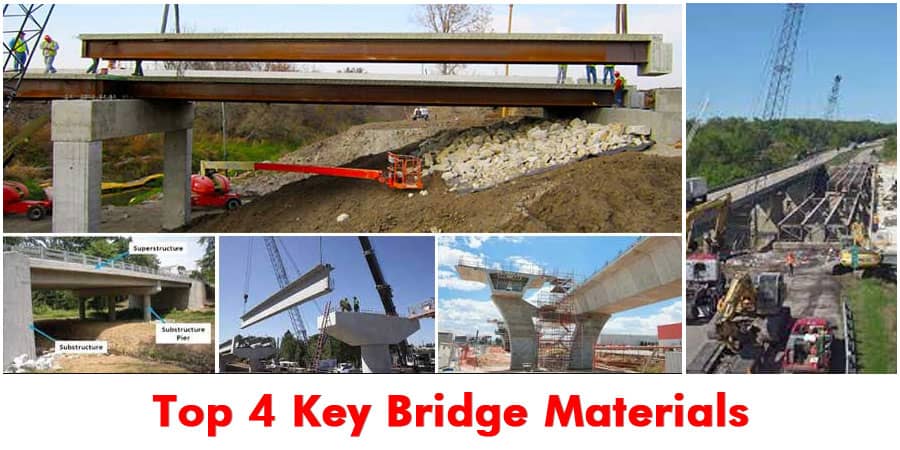A Brief Guide to the Top 4 Key Bridge Materials

Bridges are an essential part of infrastructure, connecting people, cities, and countries. The materials used to build bridges have evolved over time, and advancements in technology and materials science have led to the development of many different types of bridge materials. In this guide, we will explore the top 4 key bridge materials, their properties, advantages, and disadvantages.
Concrete Bridges
Concrete is one of the most commonly used bridge materials, especially for short to medium span bridges. The primary advantage of concrete bridges is their durability, as they can last for up to a hundred years. Concrete is also a low-maintenance material, making it ideal for bridges that are difficult to access for regular maintenance. Additionally, concrete bridges can withstand harsh weather conditions, such as heavy rainfall and earthquakes.
The main disadvantage of concrete bridges is their high cost, which makes them unsuitable for low-budget projects. Concrete bridges also require a long construction time, which can be a significant drawback for projects with strict timelines.
Steel Bridges
Steel is a popular bridge material because of its strength, durability, and versatility. Steel bridges are suitable for medium to long span bridges and can be easily prefabricated off-site, making construction quicker and less expensive. Steel bridges can also be designed to withstand high levels of traffic and heavy loads.
One disadvantage of steel bridges is that they are susceptible to corrosion, especially in areas with high levels of salt or moisture. Regular maintenance is essential to prevent corrosion, which can significantly reduce the lifespan of steel bridges. Another disadvantage is the noise generated by traffic passing over the bridge, which can be a nuisance for nearby residents.
Timber Bridges
Timber bridges have been in use for centuries and are still used for short to medium span bridges. The primary advantage of timber bridges is their low cost, as timber is a readily available material. Timber bridges are also aesthetically pleasing, blending in with natural surroundings and providing a warm and rustic appearance.
The main disadvantage of timber bridges is their durability, as they are susceptible to rotting, warping, and termite damage. Regular maintenance is essential to ensure the longevity of timber bridges, which can be a significant drawback for bridges that are difficult to access.
Composite Bridges
Composite materials, such as fiberglass and carbon fiber, are gaining popularity in bridge construction. Composite bridges offer many advantages, such as high strength, durability, and resistance to corrosion. They are also lightweight, making them easier to transport and install, and can be designed to be aesthetically pleasing.
One of the main disadvantages of composite bridges is their high cost, which can be a significant drawback for low-budget projects. Composite materials are also relatively new in the field of bridge construction, and their long-term durability and reliability are not yet fully established.
Conclusion
Choosing the right bridge material is essential for the successful construction of a bridge. The top 4 key bridge materials - concrete, steel, timber, and composite - each have their advantages and disadvantages. Understanding these properties can help bridge designers and engineers select the most suitable material for their project.
If you're looking to build a bridge and need expert advice on the best materials to use, contact us today. Our team of experienced engineers and designers can help you make the right choice for your project.
